First of all, the banding is real. It affects the Nikon D5200 and Nikon D7100, both of which share the same Toshiba sensor. Although the D5200 / D7100 sensor outperforms the Nikon D7000, the D5200 / D7100 sensor can have horizontal line pattern noise in deep shadows in low ISOs if the exposure is pushed significantly. Let's look at each of those factors one by one.
Deep shadows. Banding will show up only in shadows, and only if the shadows are deep enough. If the shadows are not very deep, there will be little or no banding. Here is a test shot:
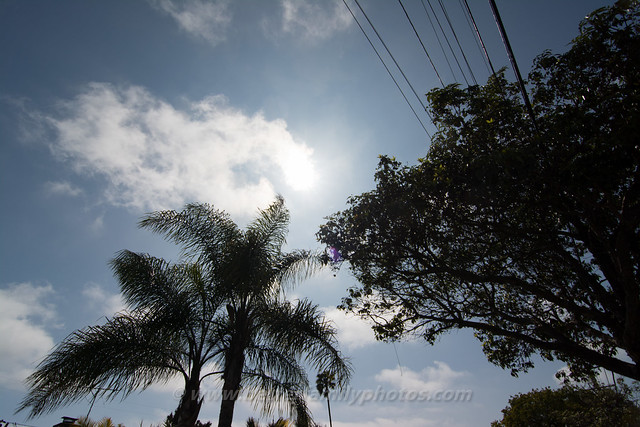
In post, I raised the exposure by +5EV, way past what is needed for recovering shadows in the image. (For the argumentative ones among us, I'm obviously doing this for discussion purposes only.)

If you look at the result, even at 100% view, there is mostly no banding, except in the darkest parts of the shadows. The thinner left branch has negligible banding while the part of the tree trunk in the middle has some banding visible.
Most of the image has negligible banding, like the left branch, which shows that banding tends to appear only in the deepest shadows.
Low ISOs.
If the ISO is high enough, the banding will not be easily discernible because of the noise in the image. Here is a test shot at 1000 ISO (cropped).
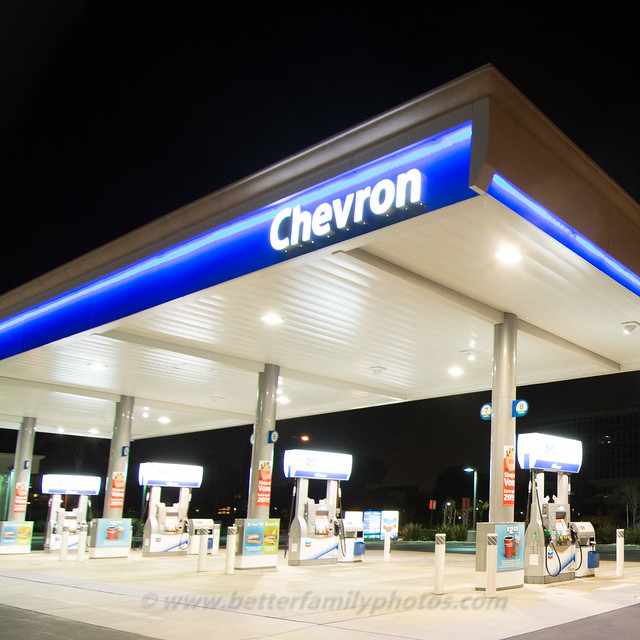
Even if the exposure is raised +5EV, the banding is hardly visible.
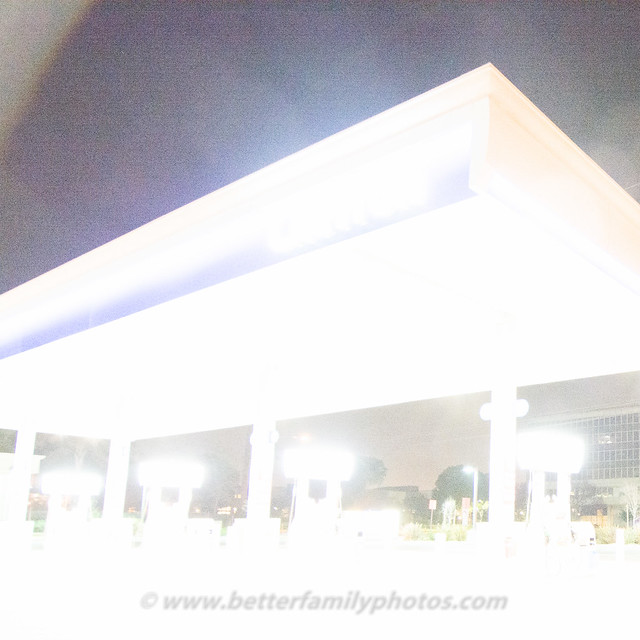
 |
| 100% crop |
Significant pushing
From testing several shots at 14-bit raw, it seems that the banding will show up if exposure is pushed by around +2.7 to +3EV. But see below re shadow recovery vs. exposure.
If you combine these three factors, it gives you an idea of the likelihood of the banding issue affecting your shots. For most people, it is very unlikely. For a few people, such as those who like to shoot sunsets, it is more likely to be observable (depending on other factors such as whether they like sunsets that show a lot of shadow detail or no detail like as a silhouette). In my case, I like to shoot backlit shots and I often underexpose intentionally to preserve highlights, then push the exposure in post. So I would say my risk is higher than average. Nonetheless, I have not yet seen banding in my normal shots, except for that day when I shot with 12-bit lossy compression (see below).
NOT A MANUFACTURING DEFECT
Earlier I had wondered whether it was an issue affecting only some units (i.e. a manufacturing defect) because the DPReview and Imaging Resource samples seem to show very little banding. However, I have gone back to the store where I purchased my camera and tried out another D7100. It showed the same banding behavior as my camera. A couple of folks on the Flickr D7100 Group and the DPReview forum have also tried more than one unit, and they also showed banding. This suggests that the banding issue affects all units.
WHAT ABOUT OTHER CAMERAS?
I had a chance to compare the D7000 and D7100. Here are shots I took using the same exposure and same lens:
D7100
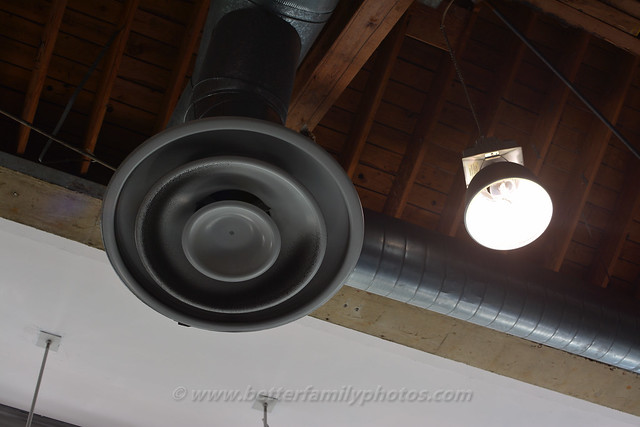
WHAT ABOUT OTHER CAMERAS?
I had a chance to compare the D7000 and D7100. Here are shots I took using the same exposure and same lens:
D7100

D7000

Using the in-camera raw processor, I pushed exposure by 2 stops. Here are the results:
D7100
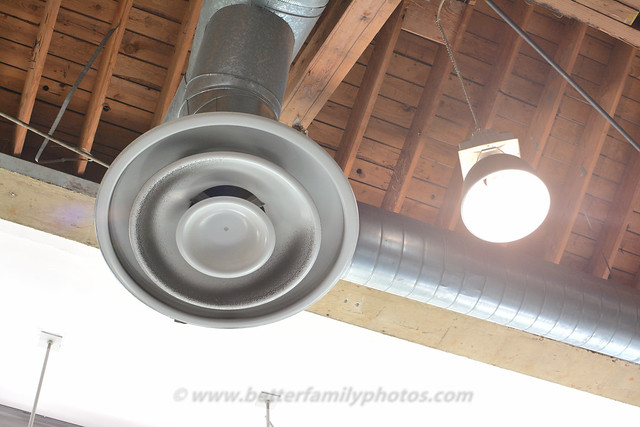
D7000
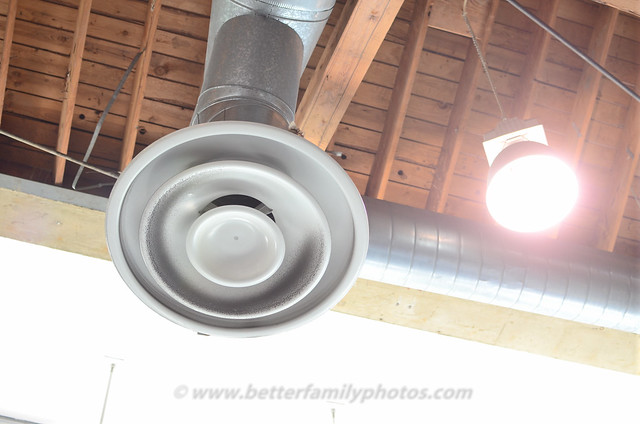
Here is a screenshot of a side-by-side comparison (note: there is a difference in magnification due to the difference in resolution):
I have looked at files from my older Nikons and I pushed the exposure +5EV in shots with deep shadow. At +5EV, I did not find any banding in the Fuji S5, Nikon D300S, D300, D90, or even the 7-year old D80. (Definitely no banding on the D3 or D600.) I did see banding on the D70 when exposure was pushed significantly. And y'all probably know banding also affects Canon cameras.
HOW TO REDUCE THE CHANCE OF BANDING
Given that the banding is a real phenomenon for the D5200 and D7100, what can we do to reduce the chance of banding (besides the factors already mentioned above)?
14-bit raw
The easiest way to reduce banding is to use 14-bit raw. In a previous post I found that 14-bit raw has far less banding than 12-bit raw. Go to the shooting menu on the camera, find the option for NEF (RAW) Recording and set it to 14-bit. We may as well use lossless compression as well, just in case.
JPEG vs. RAW
In some cases, using JPEG instead of raw shows less banding partly because the JPEG would clip shadow details that would otherwise be retained in the raw version, albeit with banding. However, for me, using raw has too many advantages that I don't wish to forgo simply to avoid banding, so I can't really do much about this except perhaps to use JPEG + Raw for shots where I suspect I will get banding. At least I will have the option to choose.
Shadow vs. Exposure
It appears that in Lightroom, using the shadow slider may show banding more readily than an adjustment with similar brightness that uses the exposure slider. However, if the version with the exposure slider is adjusted in other ways to look the same as the one with the shadow slider, then the amount of banding is similar.
Non-factors
I tested other factors and did not see a significant effect on banding from the use of Active D-Lighting, Liveview vs. viewfinder, sRGB vs. Adobe RGB, high ISO NR, long exposure NR.
Non-factors
I tested other factors and did not see a significant effect on banding from the use of Active D-Lighting, Liveview vs. viewfinder, sRGB vs. Adobe RGB, high ISO NR, long exposure NR.
There may be other factors but these are the ones I am aware of.
BANDING THERAPY
In this part, we'll talk about what to do when banding appears.
If banding does show up in your shot, the good news is that it can be mitigated in RawTherapee (thanks to Markku for the tip!), at the expense of some shadow detail. If you're not familiar with RawTherapee, hold off on googling it for a moment and check out the results first.
I used RawTherapee v4.0. I exported the problematic shot as a DNG, which RawTherapee was able to open.

BTW this was one of those shots that I took using 12-bit lossy compression before I found out the problem with doing that. Anyway, I noticed that the saturation and contrast were a little different (I suspect because LR uses custom profiles such as Adobe Standard, Camera Standard, etc. etc., which are not part of the metadata). I increased the saturation and contrast to match the Lightroom version a little more closely.
I zoomed in an area that I knew had banding in LR. Interestingly, in RT, the banding was much less noticeable.
Lightroom version (exported as a TIFF) with visible banding.
RawTherapee version with less visible banding.
Hold on, we're not done. RT has a debanding tool called line noise filter. Click on the Raw tab (it looks like a checkerboard) or use the keyboard shortcut Alt-R. Under 'Preprocessing,' you'll find line noise filter. What line noise filter does is disguise the banding by adding noise. As far as I can tell, it affects only the areas with the banding noise, leaving the clean parts of the image alone, so in that sense it is better than simply applying the grain effect to the whole image in Lightroom. Anyway, you should use as little of the filter as possible because the more of it you use, the more details you lose. Plus, at stronger levels, it creates artifacts on the edge between the noisy areas and clean areas.
Anyway, I started out with 1, then tried 10 and went upwards in increments of 10. When the banding was removed, I tried going down from that point by 5, etc. gradually identifying the minimum level. In this case I applied a filter level of 15. Here is the result:
And here are the complete images for comparison (click for full-resolution)
Lightroom version:

RawTherapee with line noise filter:
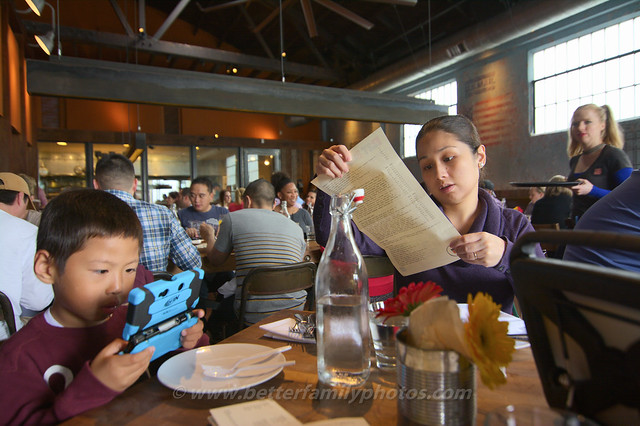
So there you have it. On the hopefully uncommon occasions where you have banding on the D5200 or D7100, RawTherapee is available to mitigate the banding. (Incidentally, I must say I really like the way RT rendered the highlights on the skin. I like it much better than how it was rendered in Lightroom.) BTW did you take my request not to google RawTherapee? That's because I wanted to save the best bit -- it's free! :D
RELATED POSTS
Nikon D7100 Hands-On Real World User Review
Importing D7100 Raw Files Into Lightroom
Nikon D7100 Low Light Teaser
Nikon D7100 FAQ and Helpful Links
Nikon D7100 Shadow Recovery
Nikon D7100 Real World Dynamic Range
Nikon D5200 and D7100 Band-Aid: Solutions for Banding
Sample of D7100 banding in a real world shot
If banding does show up in your shot, the good news is that it can be mitigated in RawTherapee (thanks to Markku for the tip!), at the expense of some shadow detail. If you're not familiar with RawTherapee, hold off on googling it for a moment and check out the results first.
I used RawTherapee v4.0. I exported the problematic shot as a DNG, which RawTherapee was able to open.

BTW this was one of those shots that I took using 12-bit lossy compression before I found out the problem with doing that. Anyway, I noticed that the saturation and contrast were a little different (I suspect because LR uses custom profiles such as Adobe Standard, Camera Standard, etc. etc., which are not part of the metadata). I increased the saturation and contrast to match the Lightroom version a little more closely.
I zoomed in an area that I knew had banding in LR. Interestingly, in RT, the banding was much less noticeable.
Lightroom version (exported as a TIFF) with visible banding.
RawTherapee version with less visible banding.
Hold on, we're not done. RT has a debanding tool called line noise filter. Click on the Raw tab (it looks like a checkerboard) or use the keyboard shortcut Alt-R. Under 'Preprocessing,' you'll find line noise filter. What line noise filter does is disguise the banding by adding noise. As far as I can tell, it affects only the areas with the banding noise, leaving the clean parts of the image alone, so in that sense it is better than simply applying the grain effect to the whole image in Lightroom. Anyway, you should use as little of the filter as possible because the more of it you use, the more details you lose. Plus, at stronger levels, it creates artifacts on the edge between the noisy areas and clean areas.
Anyway, I started out with 1, then tried 10 and went upwards in increments of 10. When the banding was removed, I tried going down from that point by 5, etc. gradually identifying the minimum level. In this case I applied a filter level of 15. Here is the result:
And here are the complete images for comparison (click for full-resolution)
Lightroom version:

RawTherapee with line noise filter:

So there you have it. On the hopefully uncommon occasions where you have banding on the D5200 or D7100, RawTherapee is available to mitigate the banding. (Incidentally, I must say I really like the way RT rendered the highlights on the skin. I like it much better than how it was rendered in Lightroom.) BTW did you take my request not to google RawTherapee? That's because I wanted to save the best bit -- it's free! :D
RELATED POSTS
Nikon D7100 Hands-On Real World User Review
Importing D7100 Raw Files Into Lightroom
Nikon D7100 Low Light Teaser
Nikon D7100 FAQ and Helpful Links
Nikon D7100 Shadow Recovery
Nikon D7100 Real World Dynamic Range
Nikon D5200 and D7100 Band-Aid: Solutions for Banding
Sample of D7100 banding in a real world shot






Thank you for the information, it's very interesting. Is it possible that Lightroom's RAW converter is causing or contributing to the banding? I use Capture NX2 with my D7100 RAW files and I have not seen any banding at all.
ReplyDeleteSirraj
Hi Sirraj. Thanks for the tip! I don't have Capture NX2 but that sounds very encouraging. I'll give it a try!
DeleteBest regards,
Mic
Hi Sirraj. I tried Capture NX2 and it does show banding as well. It is not as obvious because the exposure compensation is limited to +/- 2EV but if you add +100 (or even +40) shadow protection and +2EV then yes banding is easily visible in the deep shadow areas.
DeleteBest regards,
Mic
Hi, after dust i am banging on the next problem banding :)
ReplyDeleteThe pictures are jpg-from camera untouched the full size versions
the parameters are something like:
iso 500 f 4.5 1/20 s
http://www.flickr.com/photos/29601192@N00/sets/72157633219724445/
Hi Sorin! If you only use jpeg and not raw then you won't be able to use rawtherapee's line noise filter. Instead try Topaz Denoise 5 (which has debanding) or Nik Dfine. Hopefully those can resolve the banding that you see.
DeleteAlso, looking at the first and last images, it seems like there is a lot of room to increase the exposure (i.e. expose to the right) so that your shadows won't be so deep. In post, you can reduce the exposure to your desired level.
Best regards,
Mic
Thank you for suggesting that solutions I will try them.
ReplyDeleteYes mostly I shoot jpg...because I d'ont have time to process raw...even the computer is outdated to handle such big raw's and the hard disk is anyway full :) and I take countless pictures :) etc.
I will use raw only rare when really want to take a memorable pictures and then only if i have time to switch on raw shooting or at least remembering that i have the raw option :))
I was really surprised and upset when I saw the picture because I d'ont expected this problem to be so bad without any processing applied...I knowed already abut banding problem...I stumbled on that in more than one case but not so bad like yesterday with that pictures. And taking in account the amount of money and big effort on purchasing this body over my new d7000...you understand :)
Thank you again for your good blog and the good work here!
P.S Do you really want to purchase it again? :))
Thanks sorin. Yes I can understand why you would be frustrated, especially coming from the D7000 which had no problems at all with shadow recovery. I think you just need to get familiar with the limits of the D7100 so you can work around them.
DeleteOne question is why you need to find a way to work around those limits. For me, when I look at my D7100 shots, they seem noticeably sharper than shots I had taken with my previous DX cameras. I don't know if it's due to the higher resolution, the lack of an AA filter, or what. I also know that if I resize the image to 12mp equivalent or smaller, its high ISO is just as good as the D3 and D700. That by itself is already amazing. But there are the other features too such as the Auto ISO and Canon-style exposure compensation that I like. So those are some of the reasons I am willing to tolerate the banding and why I want to buy it again. I will have to see how the new alternative performs for me compared to the D7100.
Best regards,
Mic
Well, first of all, I am really impressed with the clean shadow recovery of the D7000 w/o banding, something I was never able to experience (to that extent) with all of my Canon sensors.
ReplyDeleteHere's what I did when shooting a back-lit subject with my Canon:
1. I'd always expose for the subject, and never care about the background, with my shooting style, the background would usually be out of focus anyway since I rarely do use wide angles.
2- Even with a blown out background, I like the picture, it looks like more ethereal.
3- When I want to preserve the background, I expose to the right, and depend on the highlight recovery (which was phenomenal on the 5D2 & 5D3), then push the shadows a little in post, but never reach +3 EV by any means.
4- Usually I shoot such scenarios at low ISO which doesn't show much banding when pushing the shadows, especially when the picture is re-sized to my usual 2500px width.
5- I find that pushing the shadows too much results in an unnatural color cast or white balance, so I rarely do use that.
6- Finally, if the picture is hopeless, I pretend it didn't exist, delete it immediately, and don't bother myself.
Tried, that soft, but on that jpg's it has 0 effect on banding...
ReplyDeleteHi Sorin. I'm not sure which software you tried but if you tried rawtherapee, you're correct it has no effect on jpegs.
DeleteBest regards,
Mic
I tried the topaz and dfine...but they have null effect on the type of banding appeared on that image posted on flicker because that band it is multiple big solid blocks versus common banding that appear visible in post processing... that are thin and dense lines.
ReplyDeleteHi Mic,
ReplyDeleteThanks for all your posts--it's an interesting read. I tried 2 D7100 bodies and posted about it in the dpreview forums, ultimately returning both. For now, I've decided to avoid posting at the dpreview forums as there are a number of extremely rude individuals at that site who cannot accept the fact that some cameras have limitations/defects if they have not experienced the problems themselves.
I am, however, following these discussions with interest, as I hope that Nikon will release a firmware update or different model that does not have this issue.
For myself, I found the best software to reduce the banding directly at the raw level is Silkypix Pro 5. If you do not have this software, I would be happy to process one of your test NEF files for you. The "neat noise" slider eliminates this noise entirely, at some expense to fine details depending on the level of banding. In many cases, there is almost no effect on overall image quality. In some cases, however (I shot a few test shots at an event with a speaker in front of a black background), and found the necessary noise reduction required cancelled out the sharpness increase of the camera's lack of AA filter.
Thanks again for posting your continued findings.
--Mark
Thanks Mark. I would also love it if Nikon could fix the D7100's banding with a firmware update but I doubt that it is possible. As for a future model without banding, most Nikons I have had in the past have no banding so if they start using Sony sensors again or at least get a license to use the Sony technology that avoids banding, then it is likely that a future model won't have banding.
DeleteThanks for the suggestion about Silkypix and the offer to process one of my files. I think the issue is that it's priced out of my reach. If I had to spend that much extra to remove the D7100 banding, then I think financially a used D700 is a better value in my opinion. But for those who already have Silkypix, that is helpful to know. Thanks again!
Best regards,
Mic
Very useful information but...What happens to video? is has the same banding problem. Is there a de-noise filter for premiere or are there optimum settings in the camera for avoiding it?
ReplyDeleteHi Juan. I'm not a video expert but i have not seen banding in video. I know that if a shot that has banding is viewed at a lower resolution, the banding is not visible. Since video is limited to 1920x1080 (a low resolution) i think it will be hard to observe it.
ReplyDeleteBest regards,
Mic
Hey Mic.. thanks again for all the research you've done on this stuff. I sold my D700 because I wanted to go small. Got a NEX 7 and I'm fairly happy with it, but it's quirky for bracketing and the lack of wide lenses (without problems) is also a drawback. Anyway, I've had my eye on D7100 but there's always something to deal with. LOL.. I guess there is no perfect camera. Love the detail and the fast focus on the D7100 and I like Nikons anyway. So, I'll keep following along until I can finally decide which to get. D7000 looks good but I hate to pass up all that detail and better AF on D7100. Thanks again.
ReplyDeleteRichard
Thanks Richard. For me the d7000 and d7100 are both very good. They each have their strengths and you just have to decide your priorities. What i like about the d7000: no banding, compatible with aputure gigtube (tilting lcd), more common button arrangement. D7100: detail, high Iso performance, af can focus better in low light, better live view implementation (but screen blanks out longer). I will go over these in a more detailed comparison soon.
DeleteBest regards,
Mic
I just got my D7100 and love to shoot at night, the stars and scenes. From the very first shot I took with the D7100, the banding was visible, even on the LCD. I have had the D80, D90, and two D7000s. Absolutely riduculous that they let this go into production. My recent aurora shots are unusable as is, and I didn't spend $1200 to have to "fix" the image. Come on, Nikon.
ReplyDeleteYes, it's too bad the D7100 has banding under some circumstances. But I would not say it's a defect -- it's something that affects other sensors too such as Canon's. The fact that many sensors in Nikon cameras are immune to it I think just got us spoiled. :) Anyway, if your D7100 is new and your primary use for it leads to banding then I think it would be better to return it (unless you don't mind fixing the banding in post-processing).
DeleteBest regards,
Mic
does 5300 also has banding issues?
ReplyDeleteHi. I don't know because I don't have the D5300. My understanding is it is a different sensor from the one used in the D7100 and D5200. I believe it is the same one to be used by Sony in the a6000. Sony sensors haven't had banding issues for a long time now (since the D70, and even the Nikon D70 wasn't so vulnerable). I suggest you bring a memory card to a store to try it out at high ISO. I hope that helps!
DeleteBest regards,
Mic
Hello,
ReplyDeleteI know you kind of answered this already in the Text - but thats some time ago now..
Do you still think, that all D7100 have this issue, so its not a manufacturing Defect but kind of "Normal"? (info: Mine also has it)
Hello,
ReplyDeletebecause this article got some older now:
Do you still think, that this banding is a Manufacturing error? (Mine got it too)